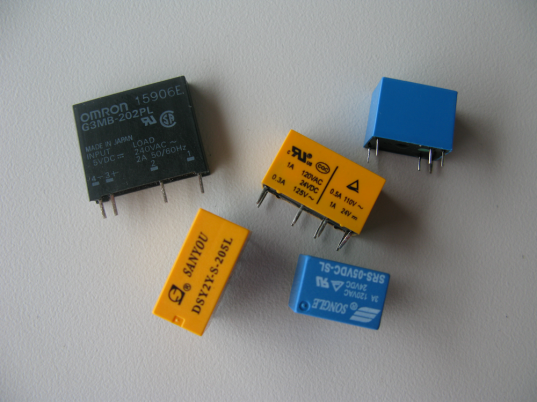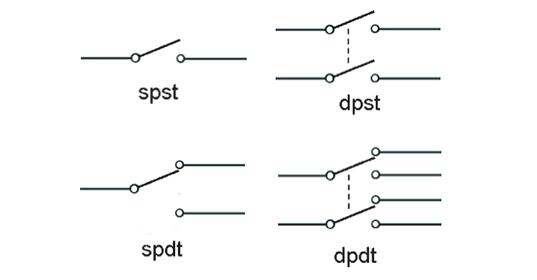
In a given situation the digital output device you use i.e. motors, solenoids or light bulbs etc may require more voltage and amperage that a microcontroller’s output pins can provide. Relays and transistors are common devices that you can use to control such devices. Relays are switching devices that are activated (thrown) by an electronic signal from a microcontroller. In principal, a relay can be used to control a device that is simply switched on or off.
As relays are switches, the terminology to describe switches is also applied to relays. A relay can operate in one of three different ways and are described as:
- Normally Open (NO):
When the relay is activated the contacts connect the circuit, the circuit is disconnected when the relay is deactivated. - Normally Closed (NC):
When the relay is deactivated the contacts connect the circuit, the circuit is disconnected when the relay is activated. - Change Over (CO) or Double Throw (DT):
When the relay is activated the contacts control two circuits: one normally-open contact and one normally-closed contact with a common terminal.
Some common designations for relays:
Single Pole Single Throw (SPST): This relay has four terminals.
Single Pole Double Throw (SPDT): This relay has five terminals.
Double Pole Single Throw (DPST):This relay has six terminals.
Double Pole Double Throw (DPDT): This relay has eight terminals.

To use a relay in conjunction with a microcontroller, ensure that the relay can be activated (thrown) by the microcontoller’s digital output power. The Arduino digital output power at 5V is 40mA or at 3.3V is 50mA. So, a 5V electromechanical or solid state relay will work well with the Arduino.
Following that the chosen relay can be activated by the microcontroller, one needs to ensure that the relay can work with the load of the device you want to switch on and off i.e. voltage and current needs of the device. The potential of the relay is commonly specified in voltage and amperage, although sometimes it is specified in watts.
